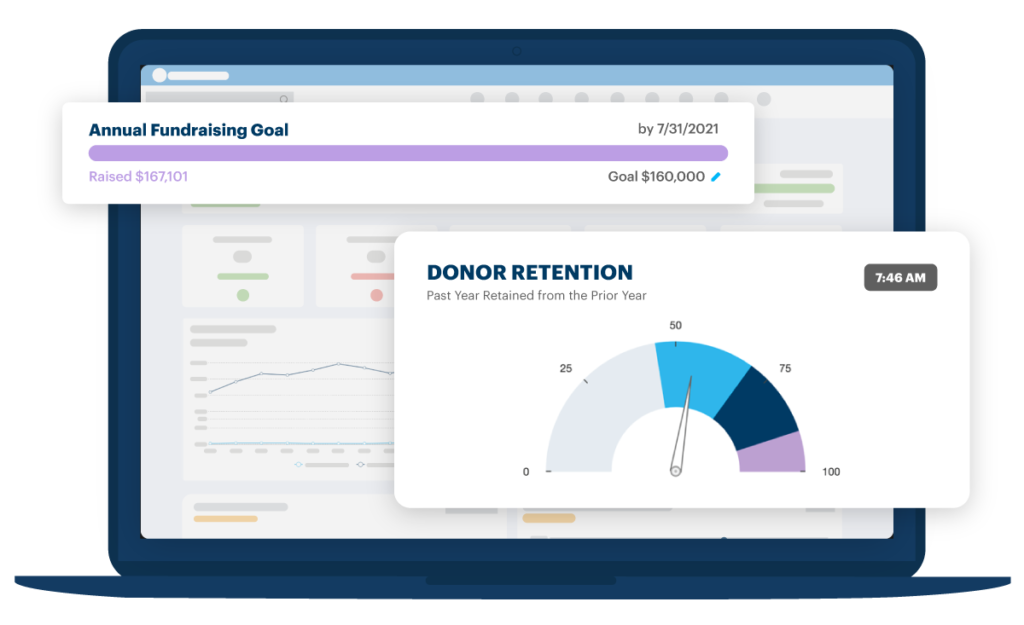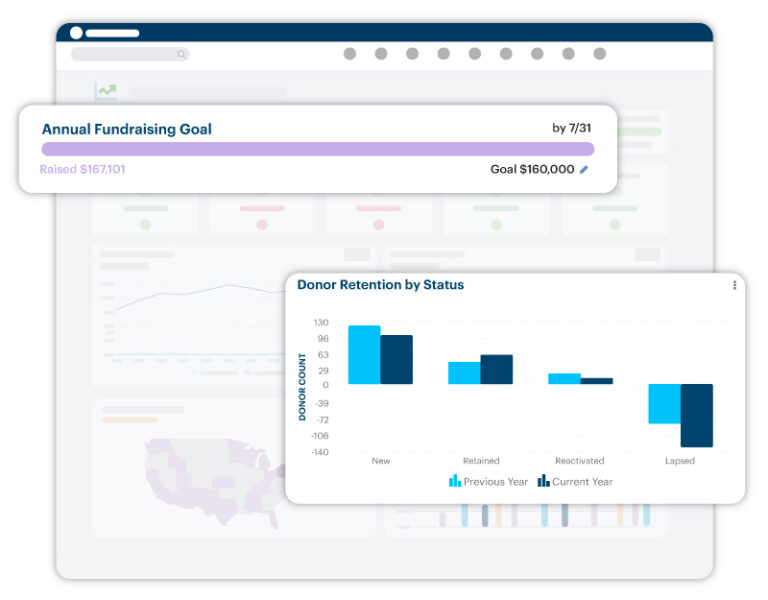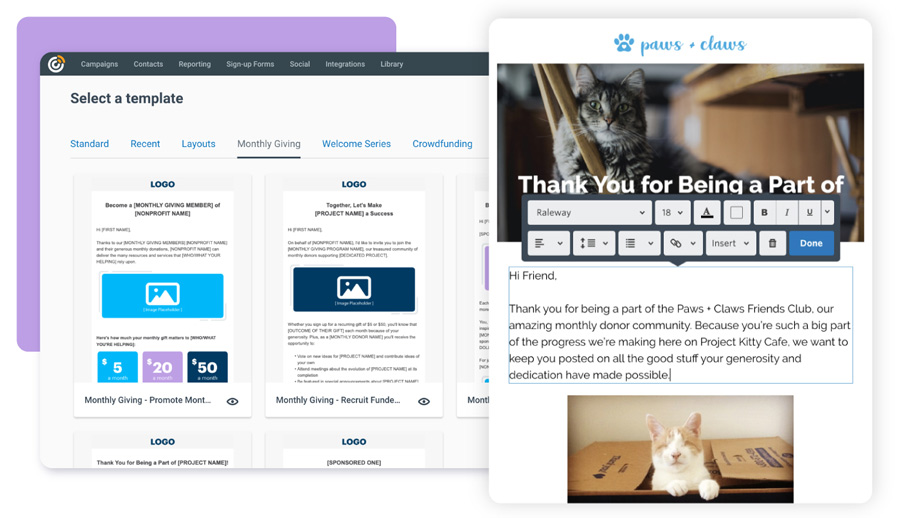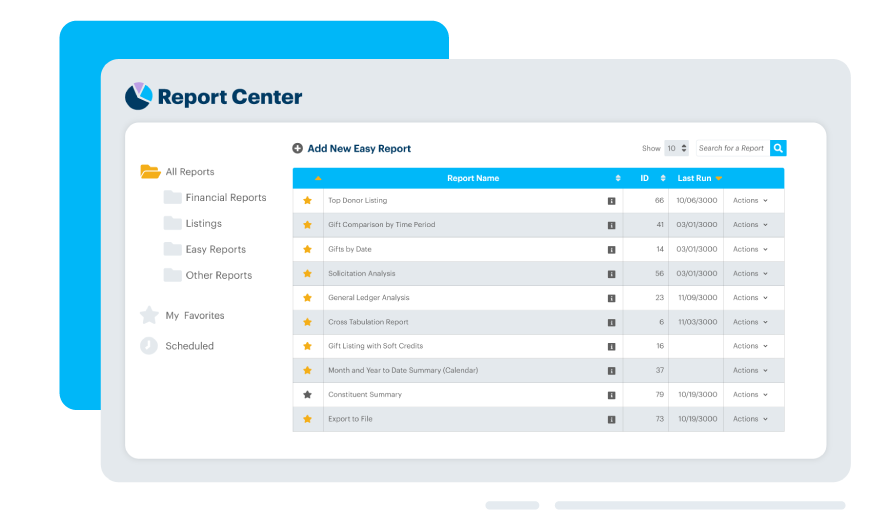Nonprofit Technology & Fundraising Blog
Subscribe to our mailing list
June 3, 2025 | Donor-Engagement, Fundraising-Operations, Planning
Despite the benefits, approximately 50% of nonprofit organizations do not have a strategic plan. Is your nonprofit leading with confidence or reacting to the next opportunity? If you’re stuck in reactive mode, you’re not alone.
Nonprofit strategic planning helps organizations like yours shift from surviving to leading with purpose. It provides direction and discipline when it matters most, turning big-picture goals into actionable steps while maximizing operational efficiency for your team.
A clear strategic plan for nonprofits strengthens your nonprofit fundraising strategy while fueling mission growth. Whether you’re a small team doing more with less or a growing organization ready to expand programs, a strategic plan can center your mission and fuel your momentum.
This post kicks off our Strategic Planning for Nonprofits series, starting with why every organization needs a clear, actionable plan.
A strong strategic plan doesn’t just set direction. It brings your entire organization together—aligning leadership, staff, board members, and supporters around a common set of goals.
Without a clear plan, even the most passionate team can drift, pulled off course by crises, funding pressures, or the next great idea. With a strategic plan, your organization gains clarity, strengthens accountability, and leads with greater confidence.
Strategic planning also lays the groundwork for stronger fundraising outcomes, better communication across departments, and long-term mission growth.
Pro tip: Strategic planning and fundraising go hand in hand. Explore 7 Ways to Tailor Your Nonprofit CRM for Fundraising Success to learn how your CRM can help align your team, goals, and donor engagement efforts.
With a clear strategic plan in place, nonprofits are better positioned to:
A nonprofit strategic plan is a roadmap that outlines your mission, vision, goals, and the strategies you’ll use to get there, usually over a 3–5 year period. It’s a collaborative document that brings together staff, board, and stakeholders to prioritize efforts, align resources, and measure progress.
Whether your team is expanding programs or stabilizing funding, a strategic plan helps define what success looks like and how to achieve it. A well-crafted nonprofit strategic plan ensures your team stays mission-aligned while adapting to opportunities and challenges over time.
Pro tip: You don’t have to start from scratch. Strategic planning can begin with simple steps to clarify your goals, prioritize efforts, and involve your team.
A strong strategic plan is built on informed decisions, and DonorPerfect gives you the data insights to make them. From donor trends to campaign effectiveness, it helps you see where you’re thriving and where to grow next.

Many organizations understand the value of nonprofit strategic planning, yet still postpone it. Here are some of the most common reasons—and how to get ahead of them:
Small teams often have multiple responsibilities, and planning can be a low priority. When you’re juggling fundraising, programs, and operations, it’s easy for strategic planning to fall to the bottom of the to-do list. It’s hard to zoom out when you’re constantly putting out fires.
Pro tip: Dedicate a short weekly leadership huddle to strategic issues. Even 30 minutes can shift your mindset from reactive to proactive.
Build a planning mindset. Use DonorPerfect’s customizable dashboards and role-based permissions to help your team stay focused on strategic priorities.

Strategic planning takes time, and time is always in short supply, but delaying planning often leads to more inefficiencies in the long run.
Investing time up front can save time later by reducing duplicated efforts, aligning priorities, and avoiding last-minute scrambles for funding or resources. A clear plan helps your team spend less time reacting and more time focusing on what matters most to advance your mission.
Pro tip: To make the planning process more manageable for busy teams, break it into small, achievable steps over several weeks.
Boards and stakeholders play an important role in shaping and championing a nonprofit’s strategic plan. When leadership and community voices are engaged from the start, long-term planning becomes more meaningful, actionable, and widely supported.
Pro tip: Conduct stakeholder surveys before the planning process begins. This will save time, surface insights, and make board conversations more productive.
Board and stakeholder buy-in is not only helpful but essential. A strong strategic plan reflects the shared vision of leadership, staff, and the broader community. Engaging them early makes implementation smoother and reinforces a sense of shared ownership.
Segment your stakeholders. With DonorPerfect’s built-in digital marketing platform, Constant Contact, you can create stakeholder-specific surveys and outreach. Personalized messaging builds buy-in and makes your planning process more inclusive.

New leaders may want to “wait and see” before engaging in planning, and outgoing leaders may delay planning, assuming it’s someone else’s job. However, leadership transitions are ideal moments to revisit a strategic plan and realign priorities.
A well-timed planning effort gives new leadership a clear starting point and reassures stakeholders that the organization’s mission remains steady, even during change. It also empowers incoming executives to build momentum rather than starting from scratch.
Change can make planning seem impossible. Economic shifts, policy changes, or unexpected crises can make even the best-laid plans feel outdated overnight. But strategic planning isn’t about rigid predictions. It’s about building agility through clear priorities.
A strong strategic plan establishes a direction, while allowing for flexibility and course correction as new challenges arise. Think of your plan as a living framework: it should provide guidance, but be adaptable enough to evolve with changing realities.
Pro tip: Schedule regular check-ins (at least quarterly) to revisit your strategic goals, and use scheduled reports to track progress. Reviewing reports regularly makes it easier to spot trends and adjust your plan before small issues become big challenges.
New initiatives and expanded services can create “mission creep”—when an organization gradually shifts away from its original mission without realizing it—if there’s no strategic alignment in place. Founders, in particular, often juggle program growth, staff training, and donor communication independently. A living strategic plan ensures that new ideas are integrated into a cohesive long-term vision, helping small teams move from reacting to leading.
With DonorPerfect’s customized training options, you can fine-tune your team’s skills and fundraising strategies with the help of expert nonprofit CRM trainers.

The pace of nonprofit work is fast and full of competing priorities. Between grant deadlines, donor meetings, and unexpected challenges, it’s natural for long-term goals to get pushed aside.
A nonprofit strategic plan gives your team a clear path forward, helping you stay focused on what matters most—even when things get busy. With a plan in place, your organization can:
Strategic planning starts with strong data. DonorPerfect’s dashboards and reporting tools help you align fundraising goals with organizational strategy. When you can see donor trends and program impact, your priorities become clearer—and more fundable.

A mid-sized arts organization had plateaued in program reach and fundraising. Through strategic planning, it identified a mismatch between its programs and the evolving needs of its audience. After refining its mission and launching a new signature initiative, it saw a 40% increase in annual giving.
Turn your plan into a fundraising engine. DonorPerfect Online Forms and campaign tools make it easy to connect your strategic goals to everyday fundraising. Use them to create branded donation pages, collect targeted gifts, and monitor progress in real time.

A human services nonprofit used a strategic plan to guide expansion into a new geographic region. Their plan included clear program benchmarks, staffing timelines, and a fundraising roadmap. Not only did they meet their impact goals, but they also exceeded their donor acquisition targets by 25%.
Pro tip: Set specific, measurable goals and objectives in your plan. Vague goals lead to vague results.
Track what matters most. DonorPerfect’s donor retention and acquisition reports help you measure progress toward your strategic plan goals. Whether it’s boosting first-time giving or improving donor lifetime value, the data is ready and at your fingertips.

These examples reflect a broader truth: a strong strategic plan doesn’t just guide internal decisions—it positions your organization to earn trust and support from funders, partners, and stakeholders.
Funders may not ask for your strategic plan directly, but they expect you to demonstrate:
A well-crafted plan gives your team the clarity, focus, and data needed to strengthen grant proposals, donor appeals, and stakeholder reports.
One of the most overlooked benefits of strategic planning is that it leads to stronger fundraising outcomes.
Here’s how:
For nonprofit leaders, strategic planning makes it easier to monitor how goals are being funded and fulfilled. It transforms data from scattered spreadsheets into clear, actionable insights.
Align your fundraising with your strategic plan. DonorPerfect’s campaign management and automation tools allow you to segment donors, track engagement, and tie contributions directly to your strategic initiatives.

Strategic planning doesn’t have to be intimidating, expensive, or reserved for large organizations. Some of the most transformative plans come from small teams that take the time to reflect, refocus, and realign.
No matter your team’s size or capacity, start with these essential questions:
Pro tip: The best time to start planning is now. Begin with small, meaningful steps, and revisit your plan regularly—it’s meant to grow alongside your mission.
When you commit to strategic planning, you’re not just creating a document—you’re building a culture of clarity, accountability, and intentional growth. You empower your team. You inspire your supporters. And with the right tools, you can stay aligned, organized, and data-informed every step of the way.
Are you ready to align your fundraising and strategic vision? Discover how DonorPerfect helps you create a data-driven plan that powers growth and donor loyalty.
This post is Part 1 of our Strategic Planning for Nonprofits series.
Coming up: How to get your team ready and lay the groundwork for planning success.
1. Can strategic planning impact fundraising?
2. Can a strategic plan help improve staff retention?
3. How can a strategic plan help manage competing priorities?
Follow us on social!